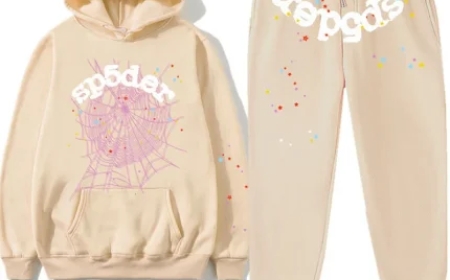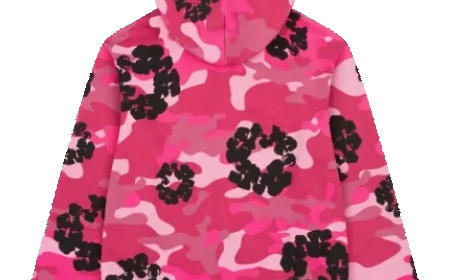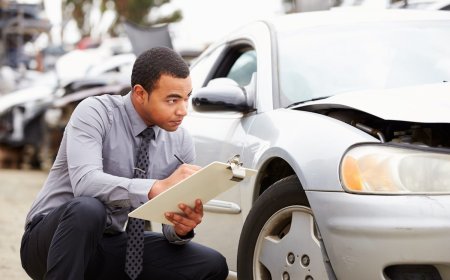How to find the best EDM festivals in Miami
How to Find the Best EDM Festivals in Miami Miami is more than just a tropical paradise with white-sand beaches and Art Deco architecture—it’s one of the most electrifying epicenters for electronic dance music (EDM) in the world. Every year, from late fall through early summer, the city transforms into a global hub for bass-heavy beats, immersive light shows, and world-class DJs spinning under the
How to Find the Best EDM Festivals in Miami
Miami is more than just a tropical paradise with white-sand beaches and Art Deco architecture—it’s one of the most electrifying epicenters for electronic dance music (EDM) in the world. Every year, from late fall through early summer, the city transforms into a global hub for bass-heavy beats, immersive light shows, and world-class DJs spinning under the stars or inside sprawling warehouse venues. Whether you’re a seasoned festival-goer or a newcomer eager to experience the pulse of Miami’s underground and mainstream EDM scenes, knowing how to find the best EDM festivals in Miami can mean the difference between a memorable night and a missed opportunity.
The challenge isn’t just in discovering events—it’s in identifying the ones that align with your musical taste, budget, location preferences, and safety standards. With dozens of events popping up across Miami-Dade County—from massive outdoor raves in South Beach to intimate underground parties in Wynwood—sifting through the noise requires strategy, timing, and insider knowledge. This guide will walk you through a comprehensive, step-by-step process to uncover the most authentic, high-quality EDM festivals Miami has to offer, while equipping you with the tools, best practices, and real-world examples to make informed decisions. By the end, you’ll know exactly where to look, what to avoid, and how to secure your spot at the events that truly define Miami’s electronic music culture.
Step-by-Step Guide
Step 1: Define Your EDM Preferences
Not all EDM festivals are the same. The genre spans subgenres like house, techno, trance, dubstep, bass, future bass, and progressive, each attracting distinct crowds and artists. Before you begin searching, ask yourself: What kind of sound moves me? Do I prefer the melodic, atmospheric vibes of a sunset set at a beachfront stage, or the raw, industrial energy of a warehouse rave with booming sub-bass? Are you drawn to international headliners like Martin Garrix or Armin van Buuren, or do you value underground local talent and emerging producers?
Understanding your musical identity helps filter out irrelevant events. For example, if you’re a techno purist, you’ll want to avoid festivals that heavily feature trap or commercial pop-house acts. Conversely, if you love high-energy bass drops and colorful visuals, events like EDC Miami or Ultra Music Festival will likely suit you better than intimate, minimal techno nights at a hidden Wynwood loft.
Take time to explore playlists on Spotify or SoundCloud that match your taste. Follow artists you admire and note which festivals they’ve played in the past. This will give you a clear starting point for your search.
Step 2: Identify the Key Seasons and Event Windows
Miami’s EDM calendar is tightly tied to its climate and tourism cycles. The peak season runs from late November through May, with the most significant events clustered around major holidays and winter breaks. Here’s a seasonal breakdown:
- November–December: Kickoff season. Events like EDC Miami (usually held in late November) and Winter Music Conference (WMC) bring international attention.
- March: The heart of festival season. Ultra Music Festival, the crown jewel of Miami’s EDM scene, typically takes place in mid-March.
- April–May: Smaller, niche events thrive. Look for underground collectives like Defected Miami, Nocturnal, and Bassment events.
- June–October: Off-season. Fewer large-scale festivals, but underground parties and weekly club nights persist.
Mark these dates on your calendar. Most major festivals announce lineups and ticket sales 3–6 months in advance. Setting calendar reminders for early-bird ticket drops can save you hundreds of dollars and guarantee entry before events sell out.
Step 3: Use Reliable Event Aggregators and Calendars
Not all event listings are created equal. Many blogs and social media posts promote low-quality or even fraudulent events. Rely on trusted platforms that vet organizers and verify event legitimacy:
- Songkick – Tracks artist tours and festival appearances with high accuracy. Set alerts for your favorite DJs.
- Bandcamp – Useful for discovering local Miami producers and their affiliated events.
- Resident Advisor (RA) – The gold standard for electronic music events globally. RA lists underground parties, club nights, and festivals with detailed descriptions, venue info, and attendee reviews.
- Eventbrite – Great for smaller, independent events. Filter by “Music > Electronic” and location (Miami, FL).
- Facebook Events – Search for “EDM Festival Miami” and sort by “Upcoming.” Look for events with high engagement (comments, shares) and verified organizers.
Pro Tip: Cross-reference events across at least two platforms. If an event appears on RA and Songkick but not on Eventbrite or Facebook, it’s likely a high-quality, industry-backed event.
Step 4: Follow Local Promoters and Collectives
The most authentic Miami EDM experiences are often organized by local collectives with deep roots in the city’s scene. These groups prioritize sound quality, artistic integrity, and community over profit. Key names to follow include:
- Defected Miami – A spin-off of the UK label, known for house and disco-driven lineups and beachside parties.
- Wynwood Walls Events – Hosts curated art and music experiences, often blending visual art with live electronic sets.
- Neon Garden – A staple for underground techno and house in Miami’s warehouse district.
- Bassment – Focuses on bass-heavy genres like dubstep, trap, and riddim, with a loyal local following.
- Submerge – Specializes in deep house and minimal techno, often held in intimate, non-traditional spaces.
Follow these organizations on Instagram, Twitter, and their official websites. They typically announce events 6–8 weeks in advance and often offer presales to newsletter subscribers. Joining their mailing lists is one of the most effective ways to get early access to tickets and exclusive content.
Step 5: Analyze Lineups with Critical Eye
A flashy lineup doesn’t guarantee a great experience. Many festivals pad their rosters with “name drop” DJs who play short sets or are even replaced last minute. Here’s how to evaluate a lineup effectively:
- Check the number of artists playing per day. If there are 40+ acts on a single day, most will have 30–45 minute sets. Quality over quantity matters.
- Look for headliners who are performing full sets. A 90-minute or 2-hour set indicates deeper artistic investment.
- Research supporting acts. Are there respected local or international underground artists on the bill? These often deliver the most memorable performances.
- Check artist social media. Do they post about the event? Are they excited? Authentic promotion is a good sign.
- Avoid “ghost-produced” or “ghosted” lineups. Some events list artists who never perform. Look for recent set recordings or live clips of the artist at similar venues.
Use tools like Setlist.fm to see what songs an artist typically plays. If their style doesn’t match your taste, even a big name may not be worth the ticket price.
Step 6: Evaluate Venue and Logistics
Location impacts everything: sound quality, crowd size, safety, and overall vibe. Miami’s best EDM festivals occur in three primary zones:
- South Beach / Lummus Park: Open-air, beachfront stages. Ideal for sunset sets and large crowds. Examples: Ultra Music Festival, EDC Miami.
- Wynwood: Industrial warehouses and art districts. Best for underground, immersive experiences. Examples: Neon Garden, Submerge.
- Downtown / Brickell: Rooftop and club venues. More upscale, often with bottle service and VIP sections.
When evaluating a venue:
- Check for proper sound engineering—high-end festivals invest in line arrays and subwoofers, not portable Bluetooth speakers.
- Look for shaded areas, water stations, and restrooms. Poor infrastructure indicates low production value.
- Verify parking and public transit access. Miami’s Metrorail and bus system can be unreliable after midnight; rideshares may surge in price.
- Read past attendee reviews on Google Maps and RA. Look for mentions of crowd control, security, and emergency response.
Step 7: Verify Ticket Authenticity and Purchase Safely
Scams are rampant during peak festival season. Fake ticket sites, resellers inflating prices, and counterfeit passes are common. Always buy from official sources:
- Directly from the festival’s official website (look for HTTPS and verified domain names).
- Through authorized partners like Ticketmaster, AXS, or Eventbrite (if listed as official).
- Avoid Facebook Marketplace, Craigslist, or unverified resellers—even if tickets seem “too good to be true.”
Check for:
- Clear refund and transfer policies.
- Secure payment options (credit card, PayPal).
- Mobile ticket delivery (no paper tickets unless explicitly stated).
- QR code verification system at entry.
If a ticket is being sold for 3x its face value, it’s likely a scalper. Use platforms like StubHub or SeatGeek only if you must resell or buy secondhand—and always use their buyer protection programs.
Step 8: Monitor Social Media and Community Groups
Facebook groups and Reddit threads are treasure troves of unfiltered information. Join these communities to get real-time updates:
- Reddit: r/MiamiEDM – Active community with daily posts about parties, lineups, and venue tips.
- Facebook: “Miami Electronic Music Events” – Over 50,000 members sharing announcements and afterparties.
- Instagram: Search hashtags like
MiamiEDM, #EDMMiami, #MiamiRave
– Follow influencers who attend regularly.
Engage with these communities. Ask questions like: “Has anyone been to this event before?” or “Is the sound system at this venue actually good?” Real attendees often share tips you won’t find on official sites—like which entrance has the shortest lines or which vendor serves the best vegan snacks.
Step 9: Plan for Weather, Safety, and Comfort
Miami’s climate can be unpredictable. Even in March, afternoon thunderstorms are common. Always:
- Check the forecast 48 hours before the event.
- Bring a lightweight rain poncho or waterproof phone case.
- Wear breathable, moisture-wicking clothing and comfortable footwear—expect to walk and stand for hours.
- Hydrate constantly. Bring a reusable water bottle (if allowed) or budget for on-site hydration stations.
- Know the location of first aid tents and security checkpoints.
- Travel with a group. Never go alone to unfamiliar venues, especially at night.
Also, be aware of local laws. Miami has strict rules on drug possession and public intoxication. While some festivals turn a blind eye, enforcement can be unpredictable. Prioritize your safety and legal standing.
Step 10: Post-Event Research and Feedback Loop
After attending a festival, don’t just post photos—analyze. Did the sound match the hype? Were the artists on time? Was the crowd respectful? Document your experience in a personal log or review on RA or Google.
Use this feedback to refine your future searches. Did you love a particular venue? Add it to your “preferred locations” list. Did a DJ deliver an unforgettable set? Follow them and check where else they’re performing. Over time, you’ll build a personalized database of the best Miami EDM experiences—making future discoveries faster and more accurate.
Best Practices
1. Prioritize Quality Over Quantity
It’s tempting to attend every event you can. But spreading yourself too thin leads to burnout and diminished experiences. Focus on 2–3 high-impact festivals per season. A single 10-hour set from a world-class artist can be more rewarding than five half-hearted performances.
2. Subscribe to Newsletters Early
Most reputable festivals offer early-bird pricing and presale codes exclusively to email subscribers. Sign up as soon as an event is announced—even if you’re not ready to buy. You’ll get updates on lineup additions, stage changes, and last-minute cancellations.
3. Avoid “Festival Hopping” on the Same Day
Some promoters try to sell you “multi-festival passes” across different venues on the same day. This is rarely practical. Miami’s traffic is intense, and venues can be 20–30 minutes apart. Choose one event per day and fully immerse yourself.
4. Respect the Culture
Miami’s EDM scene thrives on inclusivity, creativity, and mutual respect. Avoid gatekeeping, excessive drinking, or disruptive behavior. Support local artists. Tip vendors. Clean up after yourself. The community thrives when attendees act with integrity.
5. Record and Share Responsibly
While capturing moments is natural, avoid live-streaming entire sets without permission. Many artists and promoters rely on official recordings for revenue. If you post clips, tag the artist and event, and keep them under 60 seconds to avoid copyright strikes.
6. Budget Wisely
EDM festivals can be expensive. Factor in tickets, transportation, accommodation, food, water, and merchandise. A single Ultra ticket can cost $400+, and hotel prices spike during peak season. Consider staying in nearby areas like Miami Beach, Hialeah, or even Fort Lauderdale to save money. Use Airbnb or hostels with kitchen access to cut food costs.
7. Learn the Lingo
Understanding local terms helps you navigate the scene. For example:
- “Afterparty” – An unofficial event held after the main festival ends, often in a private residence or club.
- “Rave” – Typically refers to underground, non-commercial electronic music events.
- “Bass” – Short for bass-heavy genres like dubstep, trap, and riddim.
- “Wynwood” – Synonymous with art, music, and alternative culture.
Knowing these terms helps you communicate effectively with locals and find events that match your interests.
Tools and Resources
Official Festival Websites
Always start here. Reliable sites include:
- Ultra Music Festival: www.ultramusicfestival.com
- EDC Miami: www.edcmiami.com
- Defected Miami: www.defected.com/miami
- Winter Music Conference: www.wmc.com
Event Discovery Platforms
- Resident Advisor (RA): www.residentadvisor.net – The most trusted source for global electronic events.
- Songkick: www.songkick.com – Tracks artist tours with email alerts.
- Eventbrite: www.eventbrite.com – Filter by “Electronic Music” and “Miami, FL.”
- Bandcamp: www.bandcamp.com – Discover local Miami producers and their events.
Community Platforms
- Reddit: r/MiamiEDM – Active forum for real-time updates.
- Facebook Groups: “Miami Electronic Music Events,” “Miami Rave Community.”
- Instagram: Follow hashtags
MiamiEDM, #EDMMiami, #MiamiRave, #WynwoodRave.
Navigation and Safety Tools
- Google Maps: Check venue addresses, reviews, and walking directions.
- Uber/Lyft: Pre-schedule rides for late-night departures.
- Weather Underground: www.wunderground.com – For hyperlocal Miami forecasts.
- First Aid App (Red Cross): Download for emergency contacts and CPR guidance.
Music Discovery Tools
- Spotify Playlists: Search “EDM Miami 2025,” “Miami House,” “Underground Techno Miami.”
- SoundCloud: Follow Miami-based labels like Deep House Miami or Submerge Records.
- Setlist.fm: See what songs artists play live to gauge if their style matches yours.
Real Examples
Example 1: Ultra Music Festival (March)
Ultra is the largest EDM festival in the Americas. Held annually at Bayfront Park in downtown Miami, it draws over 160,000 attendees across three days. In 2024, the lineup featured Martin Garrix, Carl Cox, Charlotte de Witte, and local hero J. Worra.
Why it stands out:
- World-class production: 10+ stages, laser shows, and synchronized LED screens.
- Strong emphasis on techno and house alongside mainstream acts.
- Free shuttle service from designated parking areas.
- Strict bag policy and metal detectors for safety.
Pro Tip: Buy a 3-day pass early. Single-day tickets often sell out within hours.
Example 2: Defected Miami (April)
Hosted at the iconic Lummus Park Beach, Defected Miami focuses on house, disco, and soulful electronic music. In 2024, it featured Solomun, Peggy Gou, and Miami’s own DJ Spinna.
Why it stands out:
- Beachside sunset sets with chill, groove-oriented vibes.
- Family-friendly atmosphere with food trucks and art installations.
- Smaller crowds than Ultra—easier to move around and connect with others.
Pro Tip: Arrive by 4 PM to secure a good spot near the main stage before the sun sets.
Example 3: Neon Garden (Monthly, Wynwood)
Not a festival, but a monthly underground event that’s become a Miami institution. Held in a converted warehouse in Wynwood, Neon Garden features minimal techno, deep house, and experimental electronic acts.
Why it stands out:
- Intimate setting with exceptional sound design (Bose line arrays).
- Artists often play 3+ hour sets with no interruptions.
- No VIP sections—everyone is equal, enhancing the communal vibe.
- Strict no-phone policy during sets to encourage presence.
Pro Tip: Tickets sell out 72 hours in advance. Join their email list for presale access.
Example 4: Bassment at Space (Miami Beach)
A weekly bass music night hosted at the historic Space Miami. Features local and international dubstep, trap, and riddim artists like 1788-L, Slander, and Mersiv.
Why it stands out:
- One of the few venues in Miami with a dedicated bass-heavy sound system.
- Regular collaborations with visual artists and LED designers.
- Strong sense of community—many attendees return weekly.
Pro Tip: Arrive before 10 PM to avoid long lines. The venue fills quickly on weekends.
FAQs
What is the best time of year to attend EDM festivals in Miami?
The peak season is March, when Ultra Music Festival takes place. However, November through May offers the most consistent lineup of high-quality events. Avoid June–October unless you’re specifically seeking underground club nights.
Are EDM festivals in Miami safe?
Yes, major festivals like Ultra and EDC have robust security, medical teams, and crowd control. However, smaller underground events vary in safety standards. Always research the organizer, check reviews, and go with a group.
Can I bring my own water to EDM festivals in Miami?
Most large festivals prohibit outside food and drink, but many allow empty reusable water bottles that can be filled at hydration stations. Check the event’s official policy before arriving.
How early should I arrive for a Miami EDM festival?
For major festivals, arrive at least 1–2 hours before gates open. For smaller events, 30–45 minutes before start time is sufficient. Early arrival ensures better access to stages, food vendors, and restrooms.
Do I need to be 21 to attend EDM festivals in Miami?
Most festivals are all-ages, but some venues (especially afterparties) require 21+ ID. Always check the event’s age policy before purchasing tickets.
How can I find out if a DJ is actually performing at a festival?
Check the artist’s Instagram or Twitter for posts about the event. Look for recent live clips from similar festivals. If the lineup was announced months ago and there’s no recent activity, the artist may have been replaced.
What should I wear to a Miami EDM festival?
Wear breathable, moisture-wicking clothing. Bright colors, LED accessories, and comfortable shoes are popular. Bring a light jacket for evening breezes. Avoid heavy fabrics and closed-toe shoes if you’ll be dancing on hot pavement.
Is there free parking near Miami EDM festivals?
Free parking is rare. Most large festivals offer paid parking lots or recommend rideshares. Consider staying near a Metrorail station and taking public transit.
Can I resell my festival ticket if I can’t attend?
Some festivals allow ticket transfers through their official platforms. Others prohibit resale. Always check the terms before buying. Use official resale channels like Ticketmaster’s Fan-to-Fan to avoid scams.
What if it rains during the festival?
Most Miami festivals continue in light rain. Bring a poncho and waterproof phone case. Heavy storms may cause delays or temporary stage closures—stay informed via the festival’s app or social media.
Conclusion
Finding the best EDM festivals in Miami isn’t about chasing the biggest names or the flashiest posters—it’s about aligning your values, tastes, and expectations with events that deliver authentic, high-quality experiences. Whether you’re drawn to the global spectacle of Ultra, the beachside serenity of Defected, or the raw intimacy of Neon Garden, the key is preparation, research, and intentionality.
By following this guide—from defining your musical identity to verifying ticket authenticity—you transform from a passive attendee into an informed, empowered participant in Miami’s thriving electronic music culture. You’ll avoid scams, maximize your enjoyment, and connect with a community that values artistry over commercialism.
The magic of Miami’s EDM scene lies not just in the music, but in the people, the places, and the moments that linger long after the last beat fades. Use these tools, trust your instincts, and let your passion guide you. The next unforgettable night under the Miami sky is waiting—and now, you know exactly how to find it.























